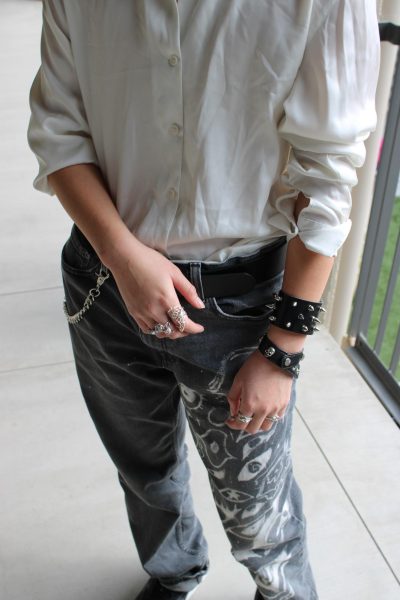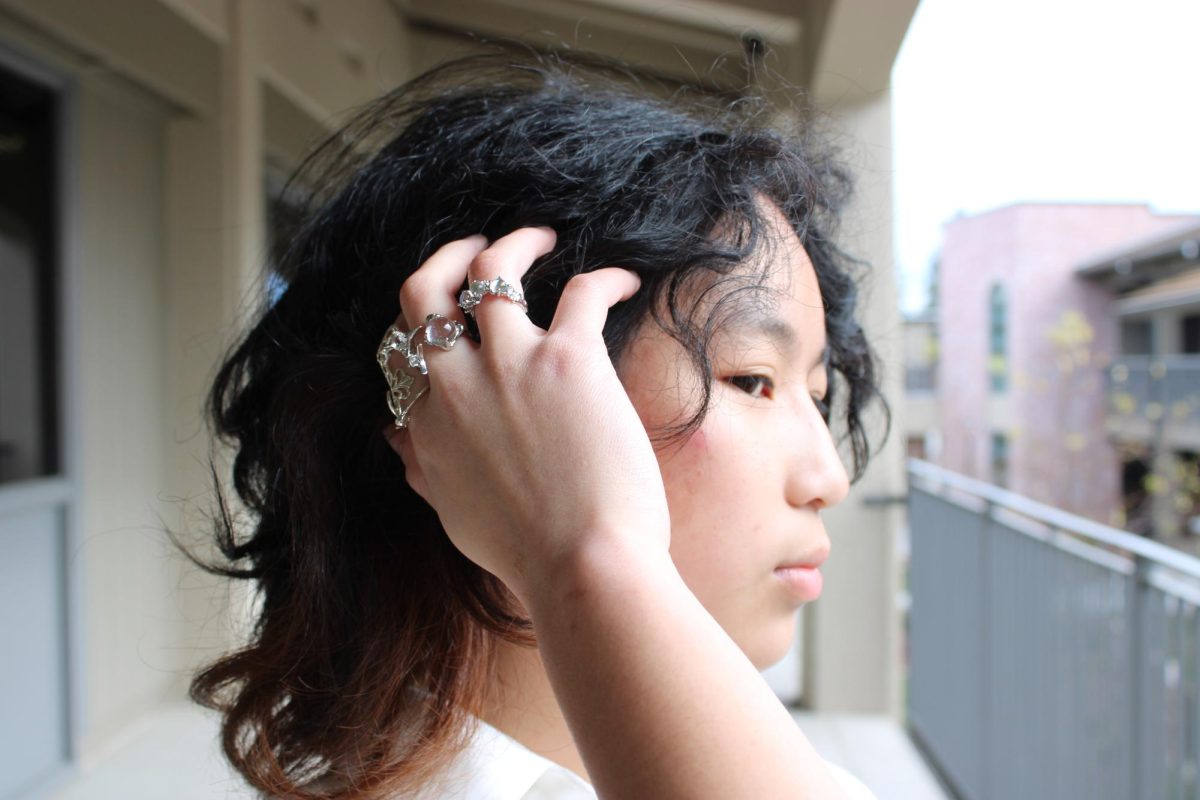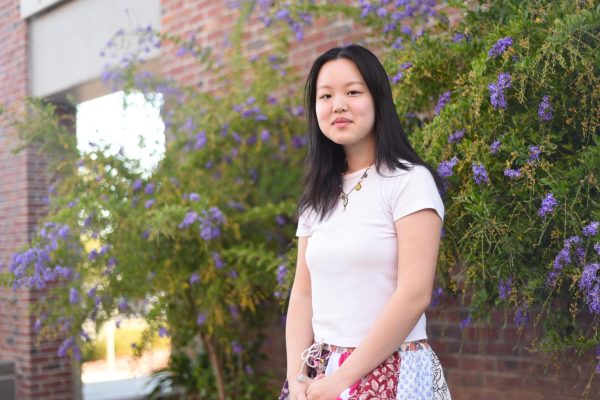From incorporating baggy clothing in her daily wardrobe to donning a suit for formal events, junior Elizabeth Trotter has gravitated towards fashion traditionally considered masculine from a young age. Trotter describes her style as not intentionally masculine, but simply “whatever [she] wants,” saying she wears what allows her to feel most comfortable. With a recent rise of ungendered fashion within mainstream culture, an increasing number of people are embracing styles that defy the gender binary. However, Trotter’s fashion choices aren’t exempt from scrutiny — they specifically feel they experience disapproval from adult figures in their life, which they say has caused a strain on relationships.
“I never really dressed girly as a child because it just didn’t feel right,” Trotter said. “People in my life notice my style and will frequently ask if I’m gay. At one point I didn’t buy specific clothing articles I thought were too masculine because I didn’t think my mom would be pleased.”
Similarly, junior Jerry Wang began incorporating feminine styles into his wardrobe from a young age, wearing items considered feminine such as scrunchies and necklaces. Wang recalls receiving criticism for the way he presented himself, despite not knowing what incurred such negativity.
“I would get bullied for acting a certain way or dressing a certain way or just being a certain way,” Wang said. “Back then, I didn’t know exactly what was wrong and my parents did tell me that it was because of the way I presented myself. But I just felt that I wasn’t willing to let go of this sort of specific attribute because it was a part of my identity, and I didn’t want to let go of my identity just to satisfy others. I just slowly learned to withstand the bullying and eventually, I just learned to be more confident about myself.”
According to Wang, clothing being historically male or female has also contributed to perceptions of what is appropriate to wear. Wang believes these stigmas can often be the result of external influences, such as one’s culture or pressure from parents.
“I think it’s been built into our society,” Wang said. “Everyone’s been enforcing these sorts of rules in the past few decades and that’s what contributes to such a huge stigma around dressing femininely and wearing these sorts of clothing. It’s a huge peer pressure thing too. A lot of people don’t necessarily think that dressing femininely is bad, but just because they hang out with a group of people who are strongly against it, they also get peer pressured to think that same way.”
In late 2020, pop-star Harry Styles appeared on the cover of the December issue of Vogue magazine dressed in a bold gown, immediately incurring harsh media backlash and sparking online debates regarding the validity of his fashion choice. The mere photograph of Styles became a contentious subject with some praising his audacious action as a feat for inclusivity while others criticized his effemination of himself, with the trending phrase, “Bring back manly men” echoing throughout social media in response to this. Trotter believes Styles’ fashion decision should not have an effect on his masculinity and saw his public defiance of traditional gendered clothing conventions on a platform as large as Vogue magazine as an inspirational gesture to audiences that also aspired to express themselves in a similar way.
“Public figures embracing ungendered styles makes me feel more normal about it,” Trotter said. “It makes me feel more open to dress the way I want because there’s other people out there and I’m not alone. People like seeing a role model step out of gender norms and represent something that they’re afraid to do because it makes them feel seen.”

Despite strong judgment from others, junior Aster Nguyen intentionally dresses in a way that defies the standards of a gender binary within fashion, incorporating feminine jewelry into his outfits. Nguyen considers fashion a large part of one’s self-expression and chooses to use his clothing as a way to contradict societal concepts of a gender binary, especially in honor of his queer identity as a trans person.
“As a queer person, it already puts you out of place with everyone else,” Nguyen said. “So, at a point, I don’t feel the need to fit in with anyone and this motivates me to embrace it more. No matter how you dress, you’re still giving off a part of you and I like to show that I’m confident in the way I dress. It’s all about how you want to present yourself to others, and it’s up to you to take control of that.”
Wang says that while his environment is typically accepting of the way he presents himself, he feels that a strong culture of conservatism within the Asian immigrant community still harbors negative attitudes toward experimental clothing. He mentions that the people he chooses to interact with are more tolerating, but he believes that he could be met with less acceptance if he moved elsewhere.
“There are a lot of people who still have ideas of sexism and traditional gender roles and gender expressions,” Wang said. “But I feel that at Monta Vista it’s very special because there are also a lot of people who choose to dress in their own way and who choose to dress how they like. That’s great because there’s just a lot of diversity at Monta Vista in terms of fashion, and I feel like a lot of people are also really supportive.”
Nguyen attributes the contempt against experimental styles of fashion to a deep-rooted issue of insecurity. While Nguyen feels that such a mentality can prohibit one from expressing themselves authentically, he expresses a desire for everyone to experience liberation by dressing in a way that disregards standards set by society.

“People who aren’t confident and sure of their identities are constantly trying to adhere to masculinity or femininity,” Nguyen said. “It condemns a part of yourself and what you could be. Even if you stay the same as you are, it’s good to experiment and try and see what you’re capable of, rather than stay within a box for life. I think you don’t realize what you’re missing out on until you try it.”












